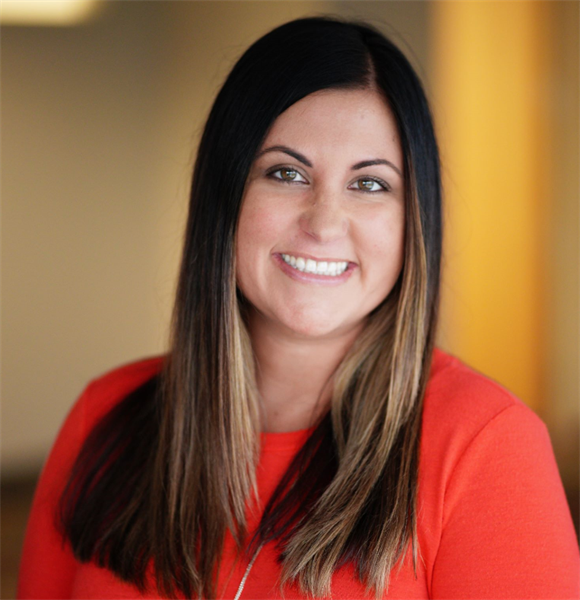
The marketing team at Ochsner Health is leveraging customer relationship marketing (CRM) strategies and technology to help improve patient outcomes. CRM refers to a personalized approach to marketing that focuses on the relationship between the patient and Ochsner Health over time.
“We all know that healthcare tends to lag behind other industries when it comes to consumer marketing and offering highly personalized campaigns. Part of that is just the nature of the industry, and our unique challenges with privacy laws,” explains Stacy Martinez, Marketing Director at Ochsner Health. “But, through our CRM platform and using data that we have available, we’ve been able to develop campaigns based on actions and experiences at Ochsner.”
Evolving Towards a Personalized Approach
“92% of marketers say that their customers, prospects—and, for us, patients—are expecting those personalized marketing experiences,” says Kylie Worley, Marketing Supervisor at Ochsner Health. “We have tried to take a couple of pages from the book of our retail friends. We’re trying to emulate Amazon, creating that really personalized web experience, understanding what we’re purchasing and what we’re viewing.”
When they first began working with the CRM, the promotional activities Stacy, Kylie, and their team conducted were mostly siloed by service line, with a focus on sending mass emails and mailers on a regular basis. “Then, we went through the process of segmenting our patients to understand the differences in healthcare preferences and usages, based on where they were in life or different household makeups,” continues Stacy.
After much research and collation of available data, they were able to incorporate fresh insights into campaign strategies. “We started running campaigns that focus more on the patient’s life stage or important events and promoting services that were relevant for each segment.”
From there, the team began to really hone in on the patient, matching individual needs not only with a campaign, but with how the campaign was presented. “For our older segments, we’ve made sure we had older people featured. For our families, we’ve made sure we had children present in the campaign. We would also customize the content to highlight the benefits and features that are most important to that audience.”
Leveraging the Data
“Fortunately, for us, marketers and healthcare marketers have access to more data sources than ever before,” Kylie shares. But, sifting through those data sources can be tricky. “What data points are the most important for us to know about our patients? What do our patients want us to know about them? And the big one, how do we bring together all those different data sources in a way that creates a personalized experience for our patients?”
Over the past couple of years, as they’ve implemented their CRM, the marketing team at Ochsner has tried to create a 360-degree view of their current and prospective patients. This has involved MyChart, clinical history, insurance, program eligibility, app usage, and more. With the CRM, all this data lives in one place for a personalized experience.
Privacy Concerns
Patient privacy is still top of mind, even with so much data being used. The team at Ochsner strives to be good stewards of their patients’ data. They think about the message and channel, personalizing without being too specific.
Personalized emails are best suited to check-up reminders or resources related to individual health concerns. Social media ads may display services of a more general nature, such as COVID-19 testing or vaccination.
Of course, the team checks in frequently with their compliance team. “They get a lot of emails from us because we want to make sure that we’re well within the line of respecting privacy,” Stacy mentions. “I’m sure they get annoyed with us, but we feel better knowing that we’re checking all the boxes.”
The Result
Ochsner Health has seen an increase in engagement with emails, patient appointments, and marketing leads since taking a more patient-centric approach.
Both Stacy and Kylie recommend the CRM approach, and advocate moving in this direction as much as possible. That may involve looking at what data points you currently have available and thinking through how you might use that data to create a more personalized campaign.
“During our strategy meetings we have an exercise where we sit and think, ‘Okay, what type of behavior do I engage in as a healthcare patient?’” concludes Stacy. “Some of our best performing campaigns were the result of us just brainstorming and thinking, ‘Okay, what do I do?’”

Kylie Worley
Marketing Supervisor at Ochsner Health

Stacy Martinez
Marketing Director at Ochsner Health
Learning More
The original version of this page was published at: https://my.shsmd.org/blogs/the-shsmd-team/2022/01/18/adding-a-personal-touch-with-customer-relationship
Serving more than 4,000 members SHSMD is a professional membership group of the American Hospital Association who powers the professions of health care, including but not limited to marketing, digi... Read more
Health care’s digital transformation has been hastened by many factors, not the least of which is competition from consumer-savvy retailers in the primary care space. Companies ...read more
The Society for Health Care Strategy & Market Development will host the SHSMD23 Connections Conference Sept. 10 – 12 in Chicago. This annual gathering of hospital and ...read more
Across the nation, hospitals and health systems are reshaping virtual care programs to be more accessible, affordable and responsive to patients, clinicians and care teams. The challenge ...read more
Encapsulating the recent Healthcare Information and Management Systems Society’s annual meeting can be like trying to devour an elephant. Where does one begin?But for health ...read more